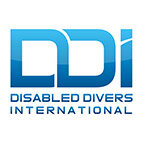first aid and cpr
The PADI Rescue Diver
course is designed to make you more aware of yourself and fellow divers to prevent as well as partake in rescues if the situation arises.
The PADI rescue certification is where every diver should aspire to get to as a recreational diver. Not only will it teach you how to deal with emergencies should they ever arise, but more importantly teach you important aspects of self rescue and how to identify possible diver emergencies before they happen.
At this stage you know that scuba diving is fun and it will continue to be fun. The rescue diver certification will make you a competent diver able to deal with and recognise potential hazardous diving situations.
The theory is presented via e-Learning which you can do at your own pace. A pre-requisite is that you have completed the Advanced Certification, first aid and CPR in the last 24 months. If you have not then the EFR (Emergency First Response) course can be incorporated and started the day prior to the course.
The rescue course involves one day of pool training followed by two days at sea over which time you will partake in 10 exercises and complete two full rescue scenarios.
Rescue training
Self rescue
Tired diver
Panicked diver
Response from boat or shore
Distressed diver
Missing diver
Surfacing unresponsive diver
Unresponsive diver at the surface
Exiting unresponsive diver
First aid for pressure related injuries
Rescue scenarios
Compass
Get comfortable with your compass. One of the exercises is the missing diver during which a hypothetical missing diver must be found. Frequently we use a weight belt as the diver for you to find. You will have to use compass navigation to perform a search pattern to locate your victim. A good review of how to use the compass will help a lot.











